HOW TO DESIGN A KITCHEN,
THE COMPLETE GUIDE
Join me -- Jeff Hunt, owner of Hunt's Kitchen Design -- on this fascinating journey where architecture meets design. As a kitchen design architect, I often find myself asked questions like, "How is design integral to architecture?" or "Isn't architecture just about the structural aspect of buildings?" In this article, we will answer these common questions and delve deeper into the symbiotic relationship between architecture and kitchen design.
Remember the awe-inspiring moment when you first saw the Eiffel Tower or the intricate beauty of the Taj Mahal? Even if you never had the chance to experience it in person, a simple photograph would have been enough to transport you to those incredible places. What makes these structures so captivating? Is it just their size or is there something more at play? The answer lies in the perfect balance between architecture and design.
 We’re not talking about design trends or aesthetics alone here; it’s about shaping spaces and creating an environment that influences our behavior and perception.
We’re not talking about design trends or aesthetics alone here; it’s about shaping spaces and creating an environment that influences our behavior and perception.
You may be wondering, “how does all of this relate to something as specific as kitchen design?” Just as the design is instrumental in architecture, it is equally key in shaping our kitchens.
The kitchen is no longer a concealed corner of a home used solely for cooking; it has evolved into a multifunctional space where we gather, socialize, and create memories. The layout, ease of movement, spacing, lighting, and color scheme are all elements of design that impact the functionality and atmosphere of a kitchen.
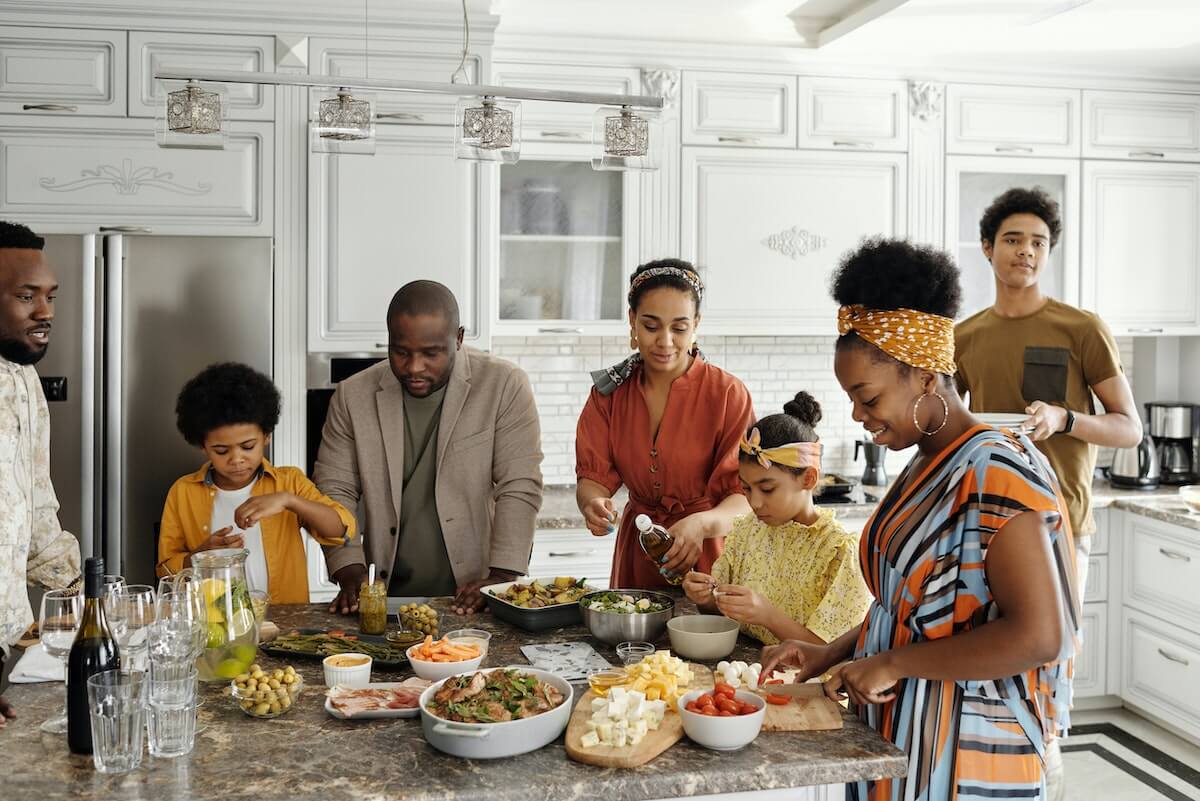
A well-designed kitchen can enhance efficiency, create a more inviting atmosphere, and even influence our mood and food choices.
Throughout this article, I’ll lay down some solid kitchen design principles and explain how they enrich our kitchen spaces to give you a foundation for creating/planning the kitchen of your dreams. I would also recommend checking my write up dedicated to grouping of the key spaces within a kitchen.
Let’s get started; when it comes to designing a new kitchen it may be tempting to aim for the extraordinary right off the bat — we don’t need to look too far for inspiration — there’s no need to reinvent the wheel to end up with something unique and impressive. It sounds contradictory that we would root the core design of our kitchen in common practices to yield something new. But, the foundation of an amazing kitchen design lies in the solid principles of design and architecture. These principles, which encompass balance, harmony, emphasis, proportion, and rhythm, are the foundational bricks that contribute to the creation of a well-thought-out, functional, and aesthetically pleasing kitchen.
Before starting the design process, the most important thing is to understand how the kitchen is going to be used. This is a basic approach that any architect must take. A kitchen can’t be just a leftover space or a space to be defined at the end of a project. Designers must understand that a kitchen has various flows and different work areas that need to be integrated throughout the entire project. –ArchDaily.com
These foundational concepts not only offer a structural basis for your design but also provide a tried-and-true formula for aesthetic success. Among these, none is more renowned or universally accepted than the “Golden Rule”. This classic principle, steeped in a rich history, can serve as an invaluable tool in planning a kitchen that is both functional and visually appealing.
The Golden Rule of Kitchen Design
Proportions and Symmetry
The Golden Rule of Kitchen Design is a principle that underlines the importance of proportions and symmetry in creating an aesthetically pleasing and functional kitchen space. Stemming from ancient Greek’s ‘Golden Ratio‘, this rule has been used by architects and designers throughout history and is based on the belief that certain proportions and symmetry are naturally pleasing to the human eye.
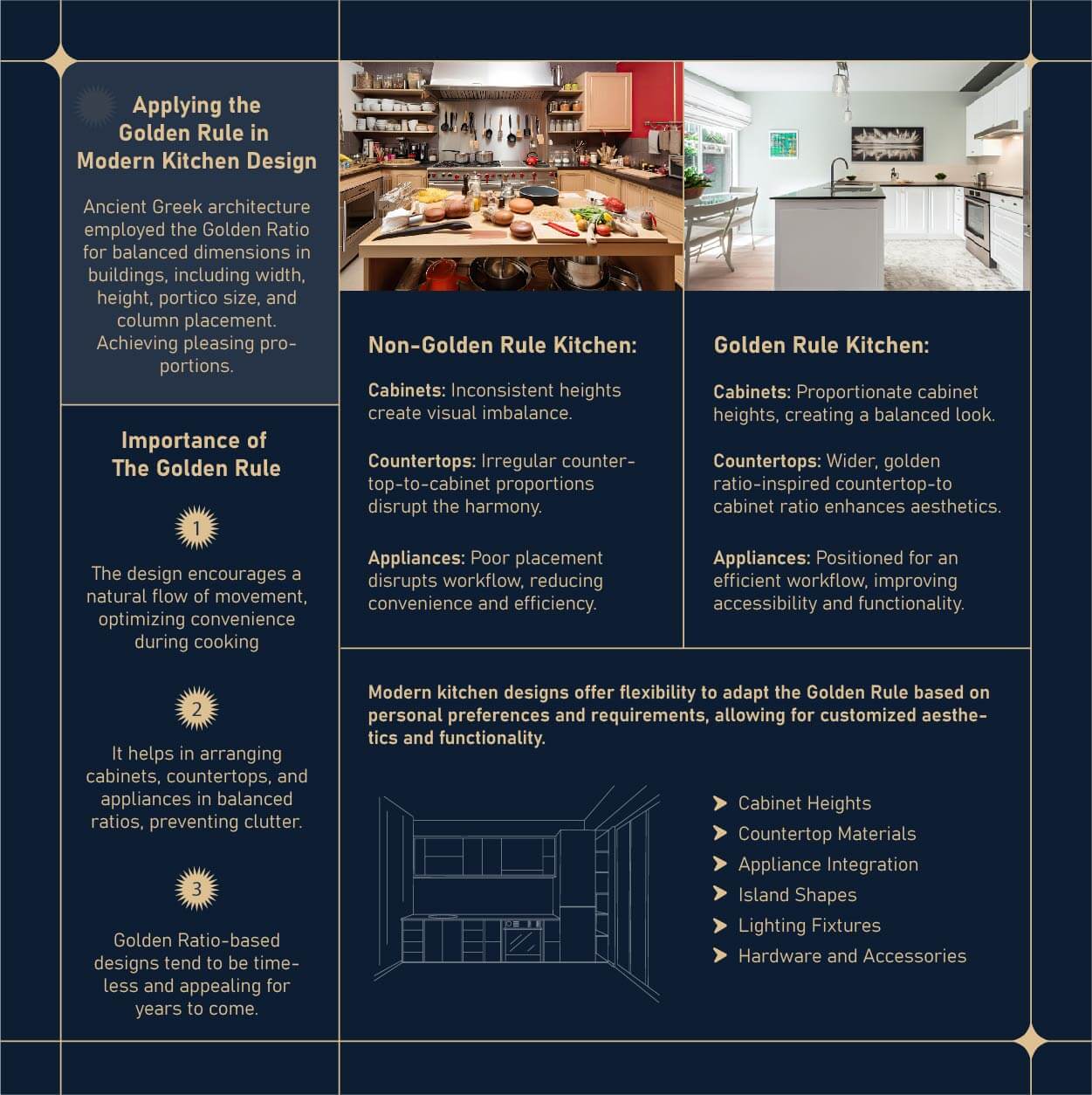
The importance of this rule in kitchen design is underscored by its ability to enhance both, the aesthetic and functional aspects of the space. It allows for a harmonious balance between the various elements in the kitchen, such as the cabinets, countertops, and appliances, ensuring no area feels overcrowded or overly sparse.
Despite the evolution of kitchen design over the years, the Golden Rule is still relevant in today’s kitchens. Modern kitchen designs often adhere to this principle, striving for a balance between functionality and aesthetics. However, the application of the rule has become more flexible, allowing for personal tastes and requirements to shape the final design.
Proportions
The Golden Rule of kitchen design accentuates the importance of proportions in creating an aesthetically pleasing and functional kitchen. Proportions refer to the relationship between the sizes of different elements in your kitchen. For instance, the size of your kitchen island in relation to your kitchen area, or your cabinet height in relation to the ceiling height. A well-proportioned kitchen aims to strike a balance in size, ensuring that no single element is either too large or too small in the context of the overall kitchen space.
Role of Symmetry
Symmetry, another crucial aspect of the Golden Rule, adds to the overall harmony in kitchen design. It is achieved when equal or mirroring elements are placed around a central point or axis. In kitchen design, this could mean placing identical light fixtures over the kitchen island, or matching upper cabinets on either side of the stove.
Symmetry in kitchen design is more than aesthetics; it really contributes to the ambiance and functionality of what is frequently referred to as the “heart of the home”; it should be integral in planning a kitchen design. See, symmetry creates a visual balance, leading to a feeling of tranquility and order, which positively affects our mood. An organized, well-balanced space reduces stress because it makes the area functional and more enjoyable to prepare a meal.
Properly arranged elements in the kitchen draw the eye and create a pleasing focal point, contributing to an inviting atmosphere. This welcoming atmosphere is crucial in the kitchen, a space often associated with warmth, gathering, and shared experiences that enrich our lives.
The ‘Work Triangle’
The concept of the Work Triangle, though simple, plays a pivotal role in kitchen design. When we help design a kitchen, layout is one of the first things we discuss. The Work Triangle helps us articulate how important functionality is.
I’ll save you the textbook explanation of the Work Triangle and break it down the way I did to a class on Career Day;
Picture your favorite triangle, maybe one you’ve drawn in math class during geometry. Now, imagine that this triangle is super magical, and it’s smack in the middle of your kitchen. This is called the ‘Work Triangle’. It’s an imaginary line that connects three important spots: the refrigerator, where we keep our food fresh; the stove, where we cook our meals; and the sink, where we wash our hands and dishes. It’s like a secret map that helps us move around the kitchen easily and quickly, just like a superhero.
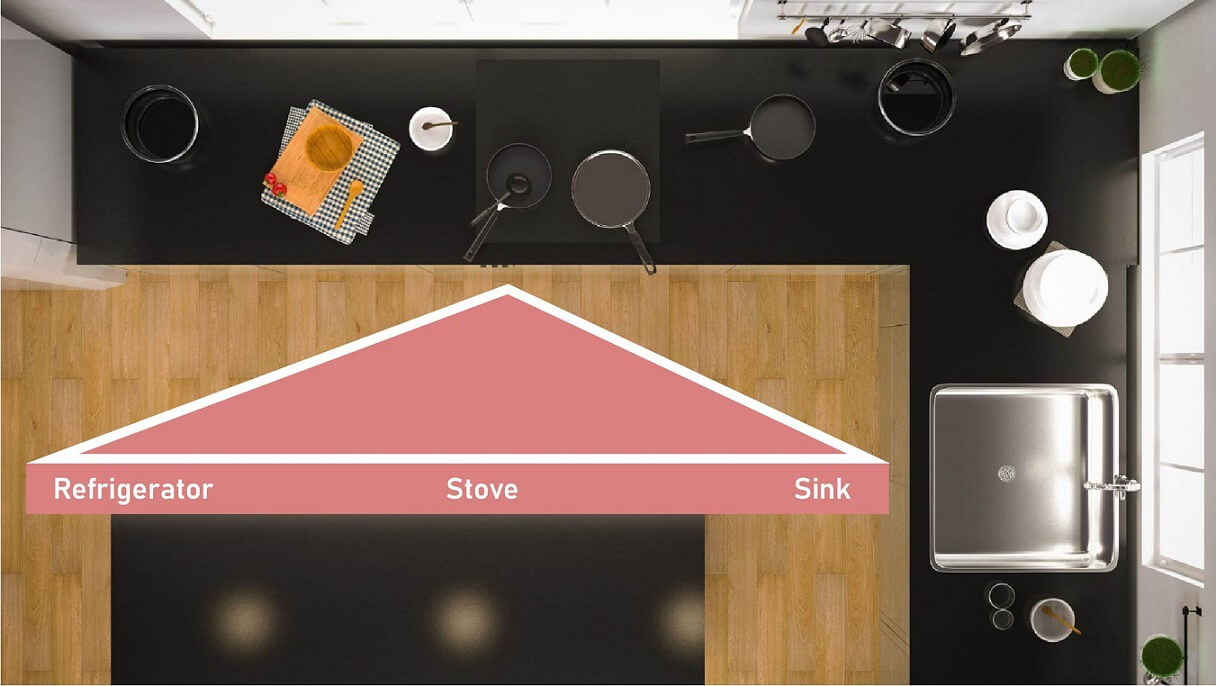
The Triangle is a practical guide to designing a functional kitchen.
Imagine you’re a chef in a busy kitchen. You’ve got your recipe, your superhero cape and, of course, your magical work triangle. You start at one point, the refrigerator, to grab your ingredients – this could be like the starting line in a race. Then, you dash to the second point, the stove, to cook your food – think of this as the exciting middle part of the adventure. Finally, you zoom over to the third point, the sink, to clean up – this is like crossing the finish line, and the kitchen is saved. So, the Work Triangle is like your superhero guide in the kitchen, helping you race through cooking with lightning speed, just like the Flash!
We can parley what we’ve learned about the golden rule of design and understand how it manifests itself into the Work Triangle principle. The Golden Rule, emphasize proportion and symmetry, intertwine beautifully with the concept of the Work Triangle. In terms of proportions, the sides of the Work Triangle should not be too long or too short – they need to be proportionate to the size of the kitchen and to each other. This proportionality ensures each station’s accessibility and maintains balance in the kitchen, aligning with the principles of the Golden Rule. Symmetry can’t be overlooked either. While the Work Triangle may not always form a perfect equilateral shape, there should still be a sense of balance among the three points. This balance enhances usability and aesthetics, creating that harmonious and functional kitchen environment. The Golden Rule is embedded within the Work Triangle, emphasizing the core principle of kitchen design: the creation of a space that is as beautiful as it is practical.
Now that you have an understanding of fundamental concepts of architecture and kitchen design principles, I’ll jump into kitchen layouts. The basic kitchen layouts below provide a continued building block in creating your dream kitchen; from L-Shaped designs to Galley kitchens, each layout holds endless possibilities. In fact, most every kitchen I’ve ever designed follows one of these six layouts below. Understanding the elements of the basic layouts allow you to create unique layouts which I’ll explain in the Hybrid Layout section. I also have an article dedicated to kitchen layouts and how they look in various types of kitchen design styles, you can check it out here.
Basic Kitchen Layouts
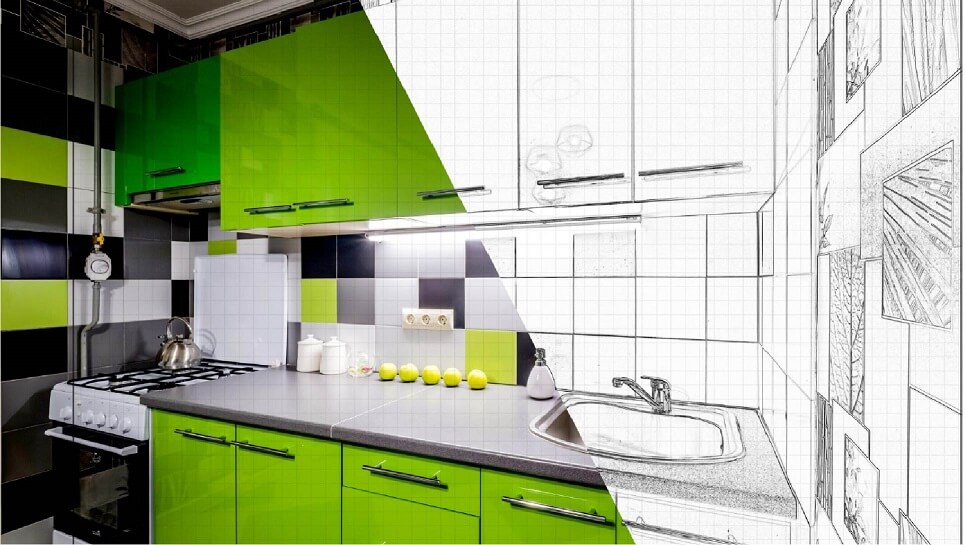
One-Wall Layout:
Ideal for small spaces, this design places all appliances and cabinets along one wall.
💡This layout accentuates both the principles of the Golden Rule and the Work Triangle, promoting balance, proportion, and easy movement within the kitchen space.
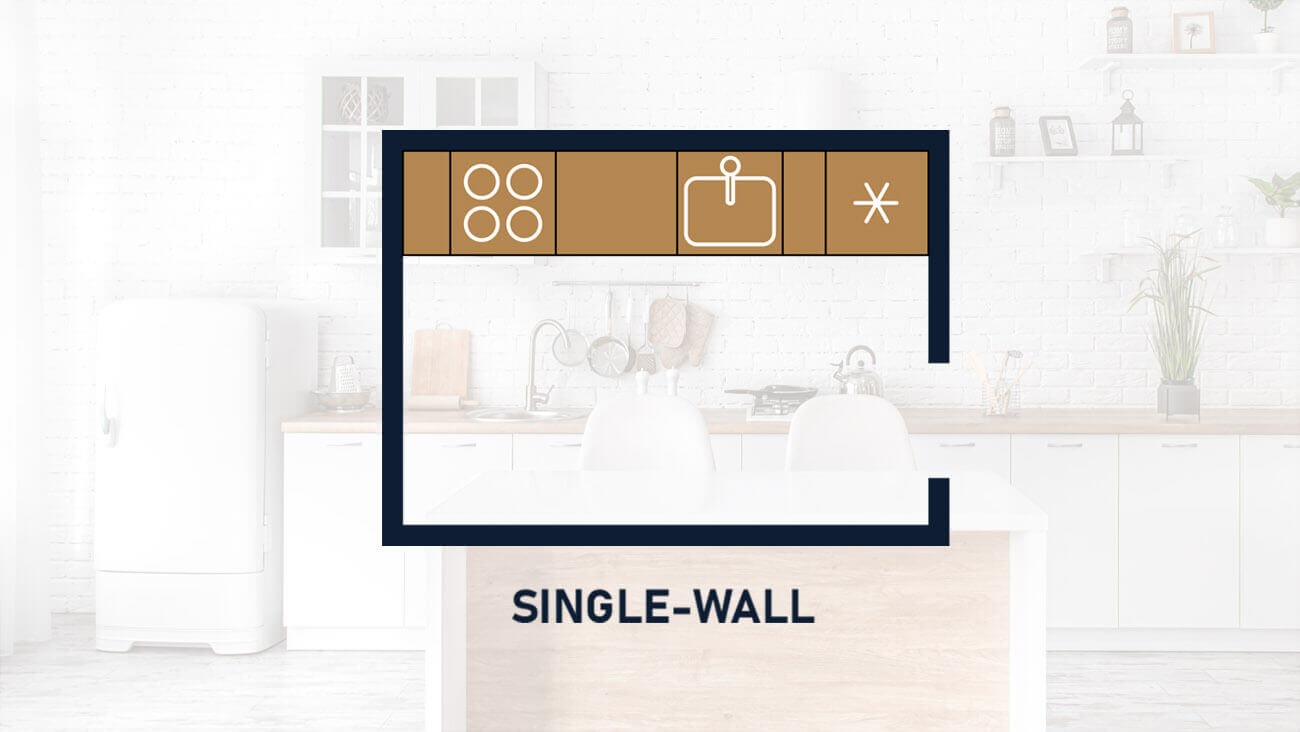
The One-Wall Layout, also known as the single line kitchen, is the ultimate space saver. It comprises a single wall of cabinets and appliances, making it an ideal solution for smaller spaces such as studio apartments, lofts, or compact houses. The design typically aligns the refrigerator, stove, and sink in a straight line. This layout is simple, functional, and cost-effective due to its minimalistic design. However, it may not be as efficient for multi-cook situations due to limited counter space and could lack storage if not planned properly. The key to maximizing this layout is utilizing vertical space, with wall cabinets or shelving. Modern improvements such as high-end appliances, pull out pantries, or sleek cabinetry can elevate the aesthetics and functionality of a one-wall kitchen.
Galley Layout:
Named after a ship’s kitchen, this layout features two parallel counters with a walkway in between.
💡Despite its narrow nature, a well-designed galley kitchen is a highly practical and efficient layout for cooking, aligning with the principles of the Golden Rule and the Work Triangle.
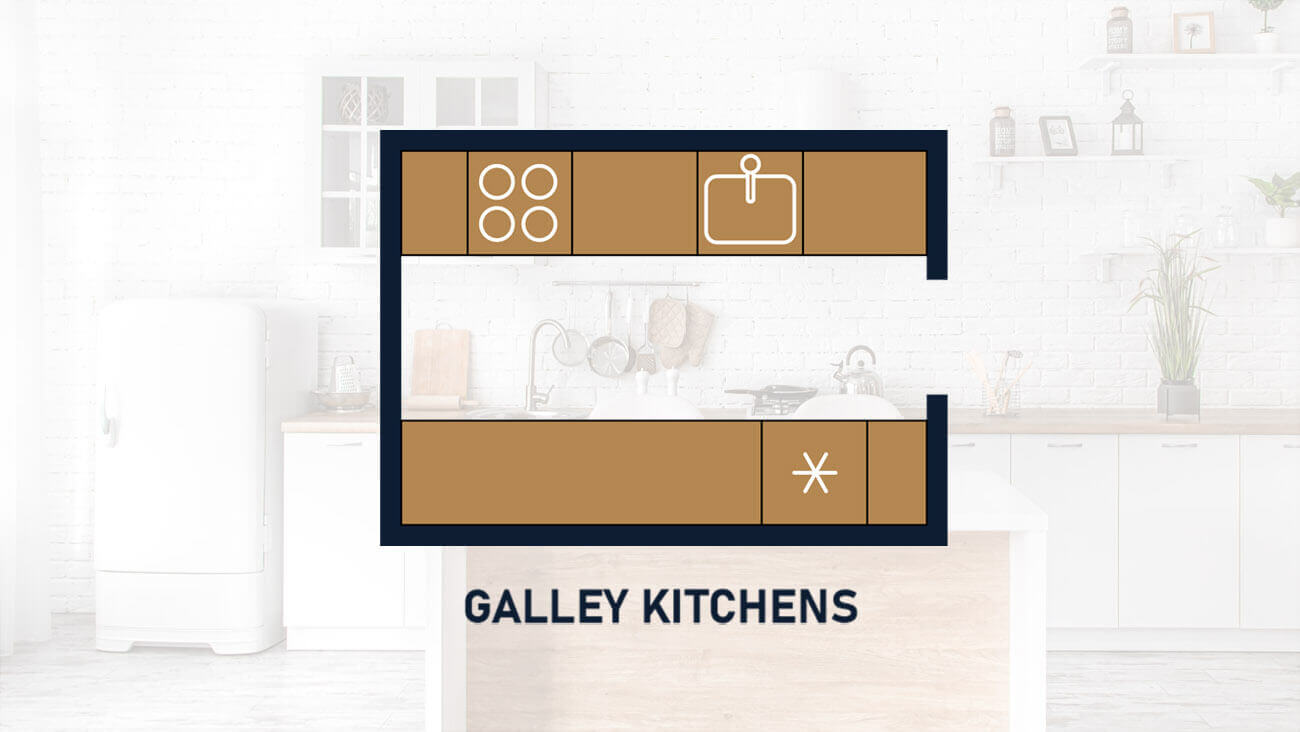
The Galley Layout is characterized by its efficiency and compact design, making it a favorite amongst professional chefs and cooking enthusiasts. It consists of two parallel countertops or rows of cabinets facing each other, forming a corridor in which people can move from one station to another with ease. This layout, like a galley on a ship, makes excellent use of limited space, providing ample storage and a streamlined cooking process. One side typically houses the sink and dishwasher, while the opposite side houses the stove and refrigerator. This layout naturally creates a work triangle, allowing for easy movement between these three key areas. It is particularly suited for long, narrow spaces, but it’s crucial to ensure there’s enough space for people to pass each other without interruption.
L-Shape Layout:
This common design utilizes two adjacent walls forming an L shape, offering ample counter space.
💡The L-shape layout encapsulates the principles of the Golden Rule and the Work Triangle, emphasizing balance, proportion and efficient flow within the kitchen space.
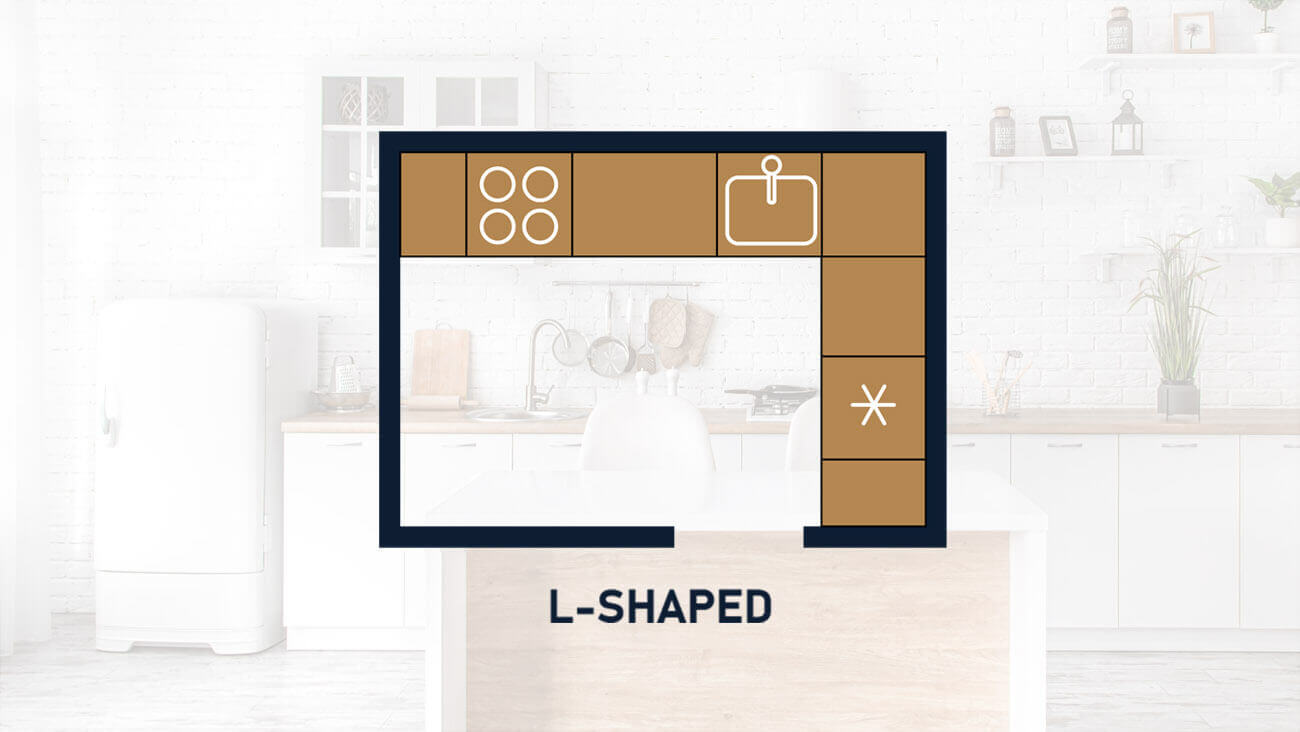
The L-Shape Layout is a versatile and popular kitchen design that utilizes two adjacent walls in an L shape, offering a spacious and flexible working area. The key elements such as the refrigerator, sink, and stove are positioned on both walls to form an efficient work triangle, keeping the core tasks of cooking, cleaning and food storage close together. This design provides ample counter space, making it ideal for multiple cooks and allowing for flexible placement of appliances. In addition, it easily accommodates the addition of a dining area or an island, making it a social hub while cooking. This layout also maximizes corner space, which can be utilized for innovative storage solutions. It’s crucial to avoid placing key work zones too far apart to maintain efficiency.
U-Shape Layout:
Surrounding the cook on three sides, this layout provides an abundance of storage and countertop area.
💡The U-Shape layout impeccably embodies the principles of the Golden Rule and the Work Triangle, emphasizing balance, proportion, and efficient flow within the kitchen space.
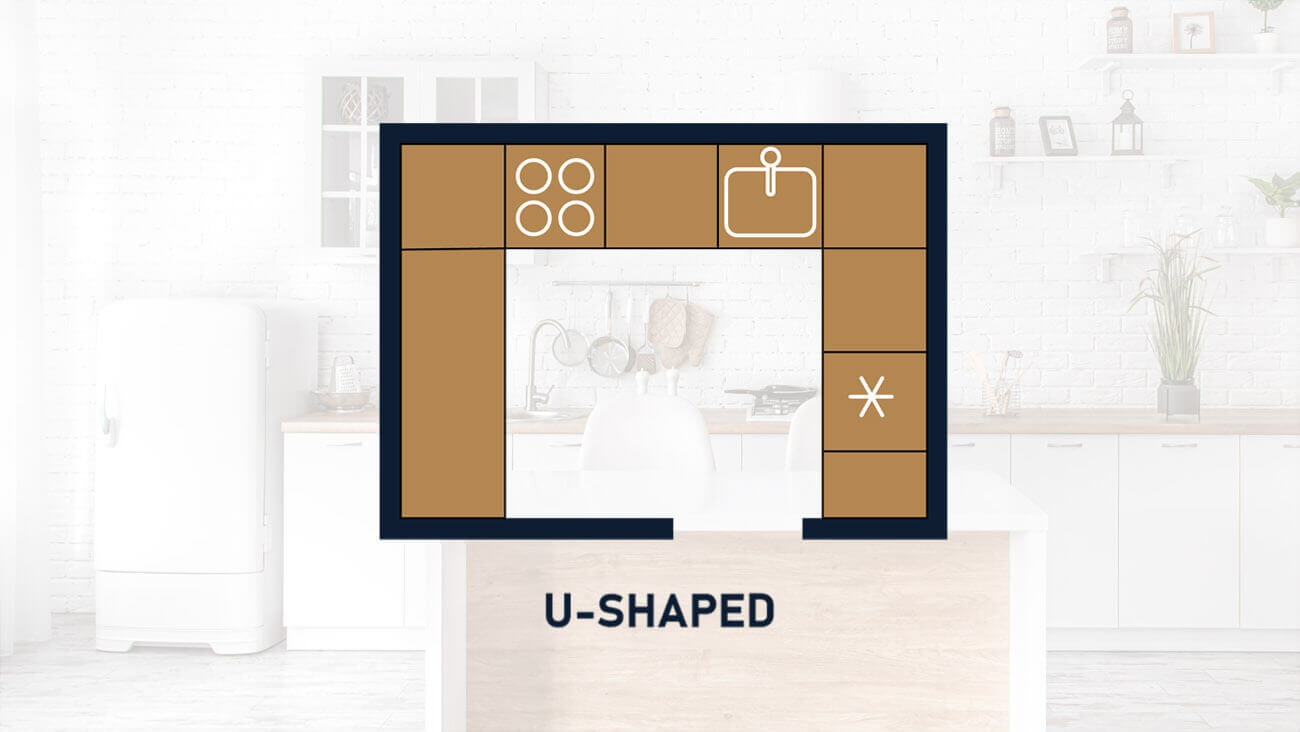
The U-Shape Layout is a highly efficient kitchen design that surrounds the cook on three sides with counters and cabinets, offering an abundance of storage and ample countertop area. In this layout, the refrigerator, sink, and stove are typically spread out on each of the three walls, forming an effective work triangle. This setup promotes easy movement between the three key areas, making it ideal for busy cooks or multiple-cook situations. This layout also allows for high flexibility as it can easily accommodate additional appliances or features, such as a kitchen island if space allows. Despite its many advantages, it’s important to ensure that the space between the opposite walls is not too wide to maintain efficiency.
Island Layout:
A popular choice in open-plan homes, this layout includes a freestanding island, offering additional workspace and seating.
💡The Island Layout exemplifies the principles of the Golden Rule and the Work Triangle, offering balance, proportion, and effective flow within the kitchen space.
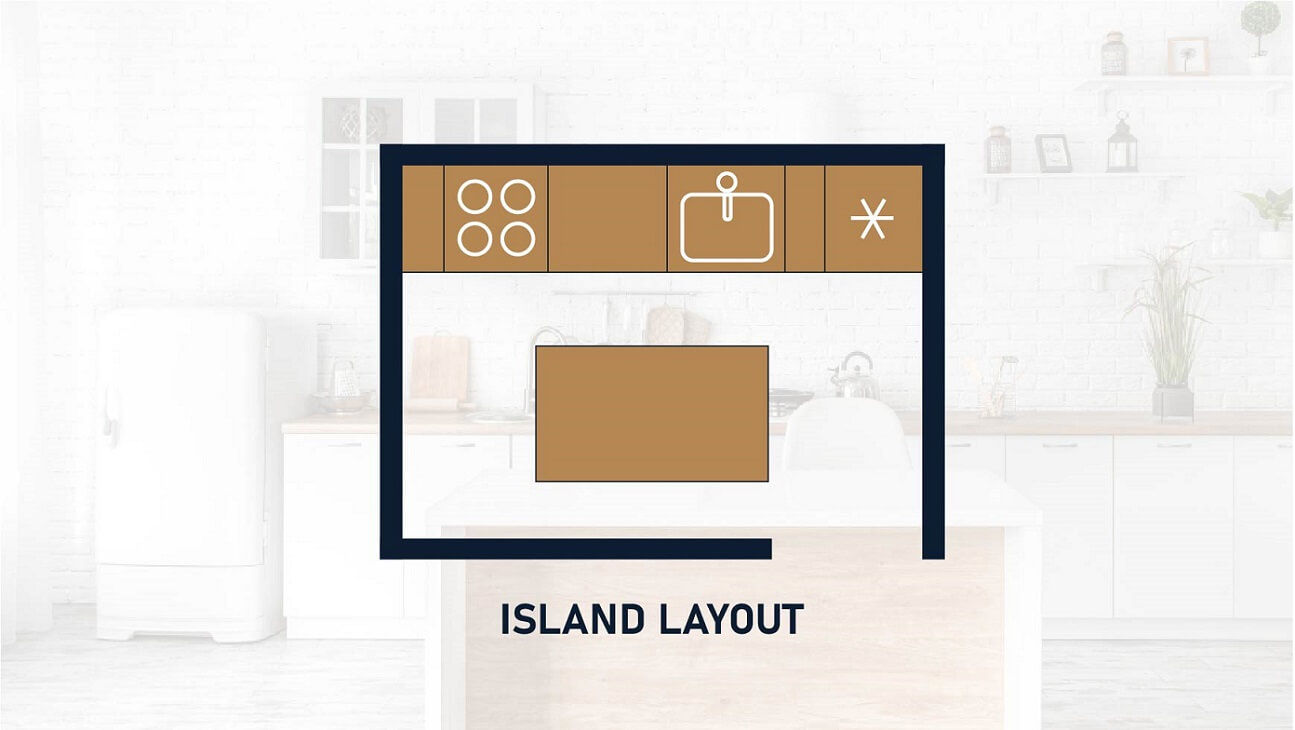
The Island Layout is a popular kitchen design choice in open-plan homes, characterized by a freestanding island that offers additional workspace and seating. This layout lends itself well to homes where the kitchen serves as a multifunctional space for cooking, dining, and socializing. The island often houses the sink or stove, creating an efficient work triangle with the refrigerator and other main appliances on the surrounding countertops. Alternatively, the island may be utilized purely for additional countertop space, storage, or seating. This layout is versatile and promotes social interaction, making the kitchen a communal space. However, ample room is needed around the island for easy movement and to prevent congestion.
Peninsula Layout:
This design is essentially an attached island, converting an L-shaped layout into a horseshoe or adding more boundary to a U-shape layout.
💡The Peninsula layout encapsulates the principles of the Golden Rule and the Work Triangle, promoting balance, proportion, and efficient flow within the kitchen space.
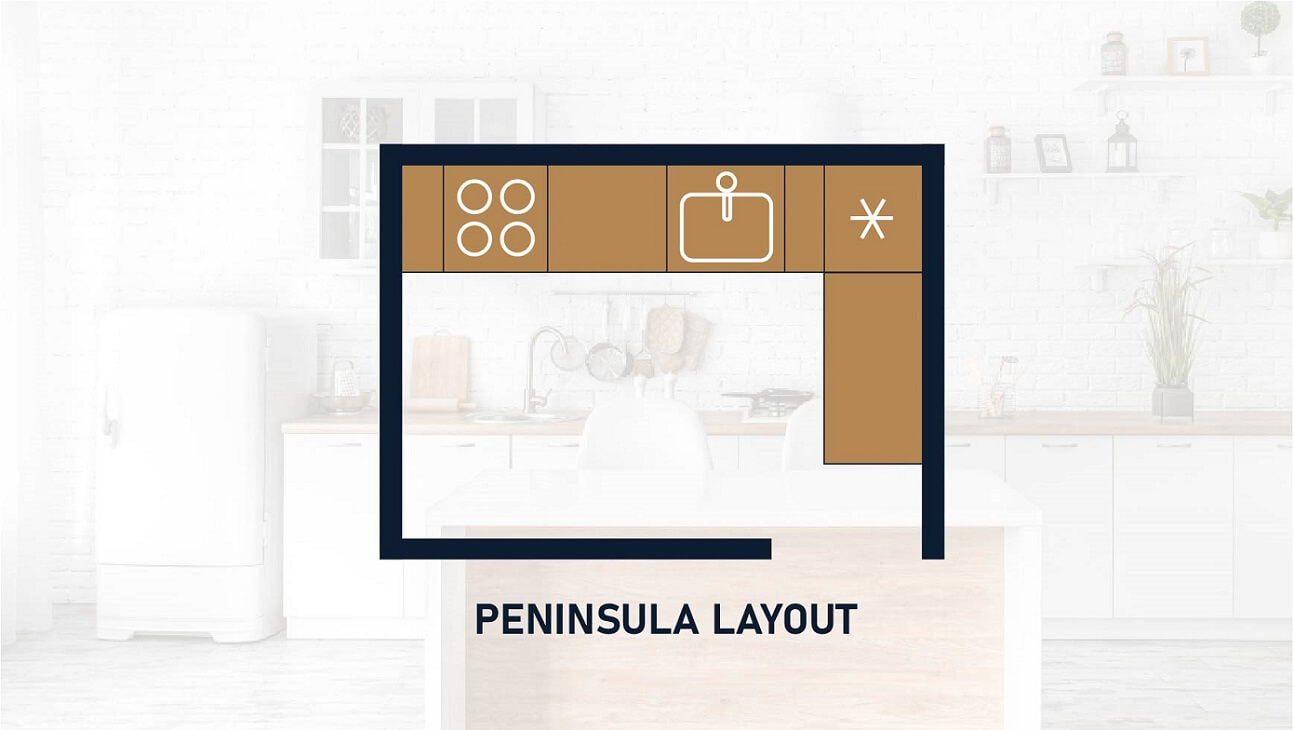
The Peninsula Layout is essentially a connected island, converting an L-shaped layout into a horseshoe, or adding an additional boundary to a U-shaped layout. It consists of a free-standing workspace that’s accessible from three sides, yet is connected to a wall on one end. This layout offers an additional counter and storage space, which can be used for cooking, eating, or even as a mini bar when hosting. The peninsula can house a sink or a stove, forming an efficient work triangle with the refrigerator and other main appliances on the surrounding countertops. This layout offers the benefits of an island layout without the need for as much space, making it ideal for smaller kitchens. However, it’s essential to ensure that the flow of traffic isn’t obstructed by the peninsula.
Building on these six basic kitchen layouts opens up a world of creativity and innovation in kitchen design as I move onto explaining hybrid layouts. This is all about merging the key concepts of the six basic layouts to form hybrid designs that cater to specific needs and tastes. For example, you might combine the ample counter space of the L-Shape layout with the social aspects of an Island layout, or the efficiency of the U-Shape with the added functionality of a Peninsula. By doing this, you further optimize space, improve workflow and enhance the aesthetic appeal of the kitchen.
Hybrid Kitchen Layouts
Combining Different Elements
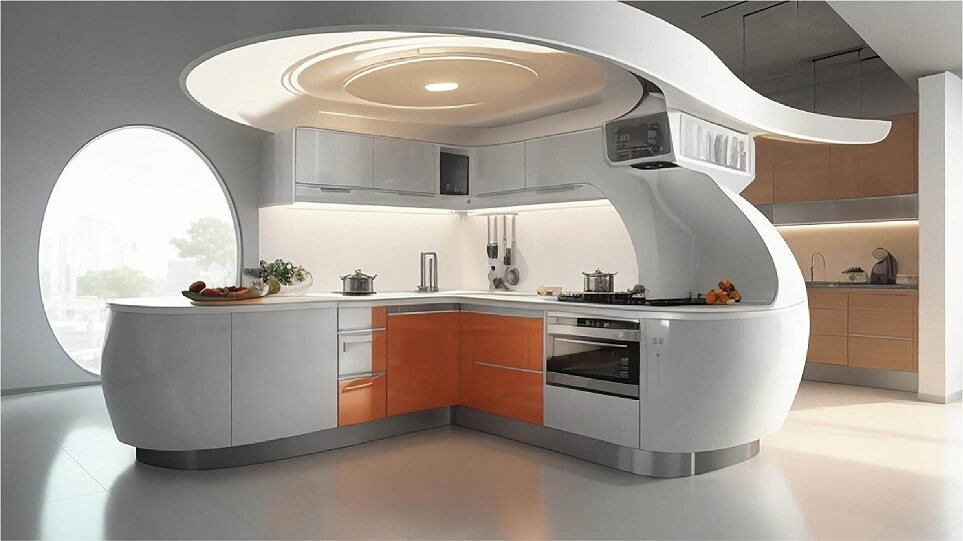
Hybrid kitchen layouts have gained popularity because of the flexibility, functionality, and aesthetic appeal they bring to the table.
L-Shape with Island:
This layout combines the benefits of the L-shape layout with the added functionality of a kitchen island. It offers extra workspace, additional storage, and a casual dining area.
The L-Shape with Island layout ingeniously merges the spacious and flexible working space of the L-Shape layout with the multifunctionality of an Island. This layout features two adjacent walls forming an ‘L’ shape for the key elements such as refrigerator, sink, and stove, while the island serves as an additional counter space, often housing one of the key elements to maintain an efficient work triangle. This setup creates an abundantly spacious and versatile working area, providing ample room for storage and appliances, and allowing for more than one cook. The island can also serve as a casual dining area, making the kitchen a social hub. However, to ensure easy movement and avoid congestion, it’s essential that the kitchen space is sufficiently large to accommodate the island.
U-Shape with Peninsula:
An evolved version of the U-shape layout, this design replaces one of the walls with a peninsula. The peninsula serves as an additional work surface and can also function as a dining area.
The U-Shape with Peninsula layout is an innovative adaptation of the traditional U-Shape layout. Replacing one of the three walls with a peninsula, this layout results in a semi-enclosed working space. A U-shaped counter arrangement ensures optimal storage and workspace, while the peninsula extends from one end, providing additional counter space. This extra workspace can be efficiently utilized for meal preparation or can function as a casual dining area. It’s an excellent choice for kitchens where space is limited but where the functionality of an island layout is desired. The peninsula can house a sink or stove, creating a dynamic work triangle with the refrigerator and other primary kitchen appliances. However, ensuring that the placement of the peninsula does not obstruct the workflow is crucial for maintaining the efficiency of this layout.
Galley with Island:
This hybrid layout uses the efficiency of the galley design and incorporates an island. The island can serve many functions such as additional storage, prep area, or an informal eating area.
The Galley with Island layout is a creative fusion of the traditional Galley layout and the multifunctional aspects of an Island. This design layout essentially involves two parallel counters that form the efficient galley setup, complemented by a freestanding island. The parallel counters make for an ideal working space, allowing easy access to all areas of the kitchen without the need to move around too much, therefore maximizing efficiency. The addition of an island in the kitchen, depending on the available space, provides extra counter space that can be used for various purposes such as meal preparation, additional storage, or even as an informal dining area. This layout is a great choice for those who desire the functionality of an island but have a kitchen space that is more suited to a galley layout. However, the placement of the island should be carefully considered to ensure it does not obstruct the workflow between the two parallel counters.
Keep in mind that these are not the rules but flexible guides that can be adapted based on individual needs and kitchen dimensions. Moreover, they combination of hybrid designs are endless, the above are just a few popular combinations.
Now that you have a solid understanding of the fundamentals of kitchen layouts, it’s time to move onto the next crucial aspect of kitchen design – selecting the right appliances.
Focal Point
When thinking about kitchen design it’s important to consider where your focal points will be. When you walk into a kitchen, what should draw your attention first? Whether you choose statement appliances or a stunning backsplash pattern, having an eye-catching focal point is key for creating an inviting and memorable space.
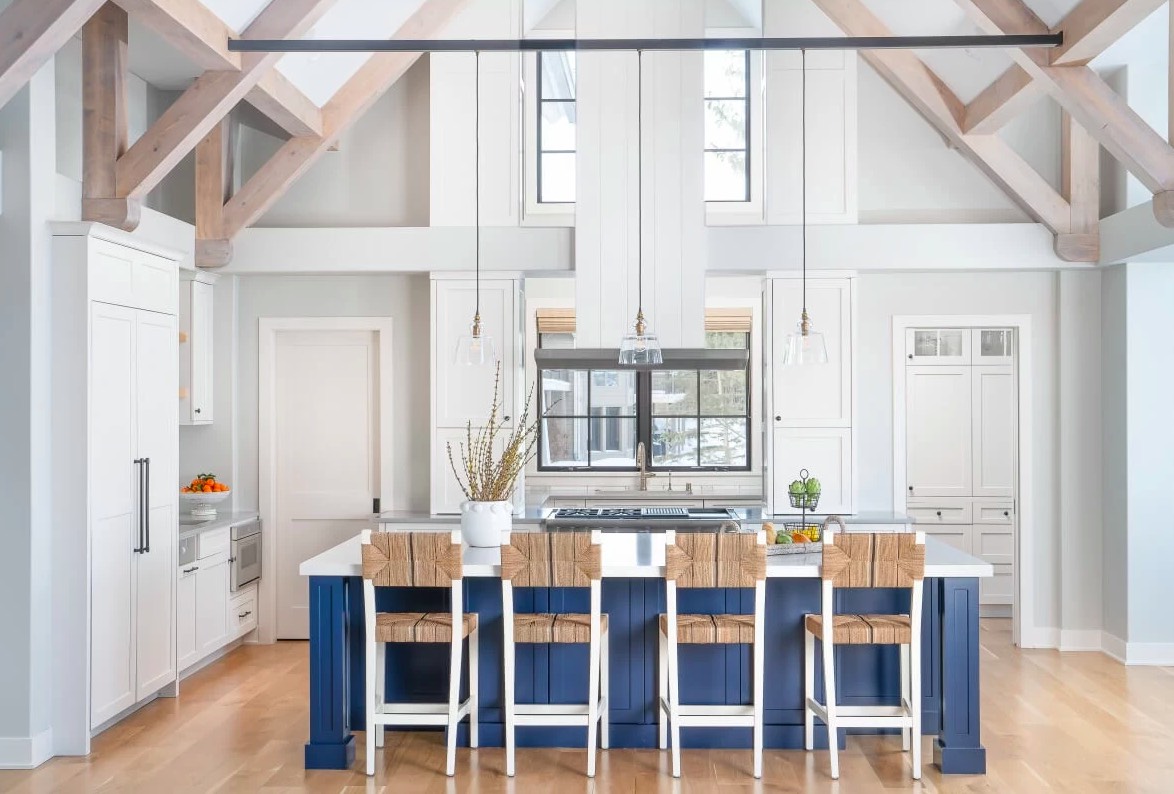
If you are looking to make a bold statement in your kitchen, statement appliances are a great way to do that. Appliances come in all shapes and sizes, from refrigerators with bold and eye-catching colors to stoves with sleek and modern designs. These statement pieces will instantly draw attention when you enter the room – making them an excellent focal point for any kitchen design.
Choosing the Right Kitchen Appliances
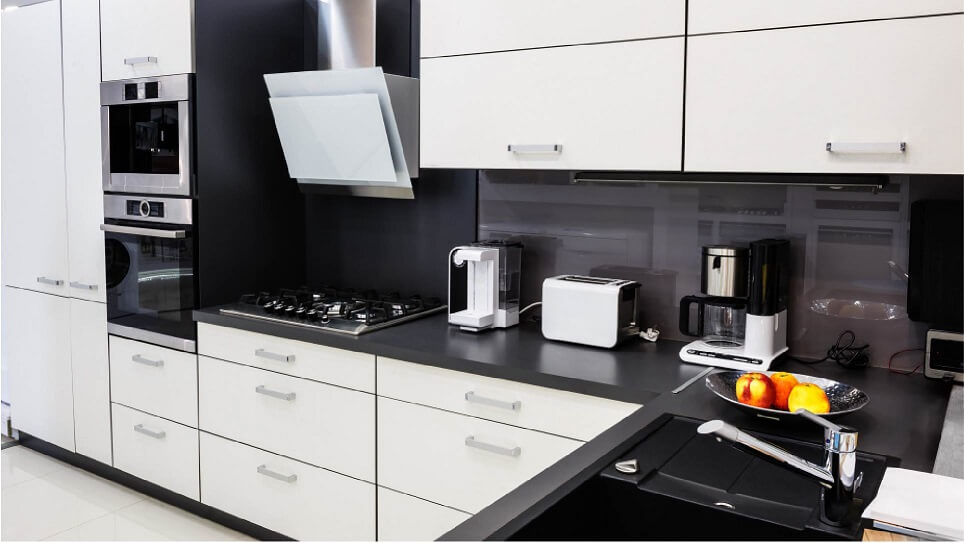
Once you have finalized the design structure of your kitchen, it is time to shop around for which appliances will best complement your design. Appliances should not only complement the design and layout of your kitchen but also your cooking needs and lifestyle.
- Refrigerators: The size, style, and placement of your refrigerator should align with your kitchen layout and personal needs. Consider options such as top-freezer, bottom-freezer, side-by-side, French door, or a mini-fridge for smaller spaces.
- Cooking Range/Stove: Do you prefer a traditional range or a separate cooktop and oven? The choice largely depends on your cooking habits and the amount of space available.
- Dishwasher: With numerous size and style options available, the dishwasher should be chosen keeping in mind its location in relation to the sink and your dishwasher usage habits.
- Microwave: The placement of the microwave is crucial for easy access without obstructing the work triangle. Consider built-in, countertop, or over-the-range options.
The key is to integrate appliances with a good balance between functionality and aesthetics.
Backsplash & Countertops
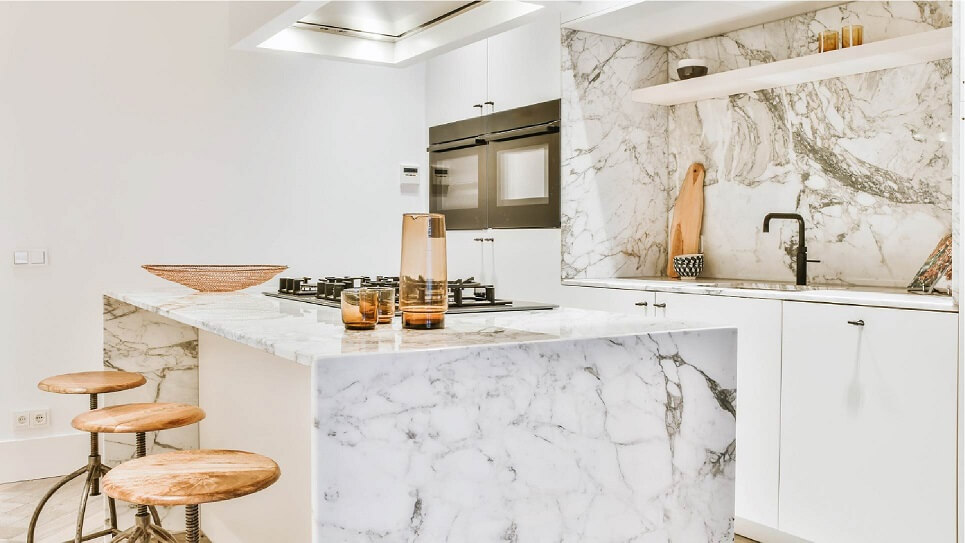
If you prefer a more subtle focal point, a backsplash is an ideal option. Whether you choose classic white tiles or a bold and colorful pattern, the backsplash will instantly bring attention to the room.
Kitchen countertops also make great focal points as they can be customized in terms of material and shape – making them both aesthetically pleasing and functional additions to any kitchen design.
No matter what design element you choose as your focal point, it’s important to make sure that the rest of the kitchen complements and enhances the overall look. For example, if you have chosen a bright fridge as your focal point, then it’s best to opt for sleek and neutral tones throughout the rest of the room so that your statement piece truly stands out.
Lighting

In any kitchen design, lighting plays an essential role in creating the right atmosphere and mood. To ensure that you have ample lighting throughout the room, consider layering your lights by combining overhead lights, task lighting, and even under cabinet lighting. With so many options to choose from – such as pendant lights and spotlights – you can easily find the perfect lighting fixtures to complement your kitchen design.
Also See: Guide to Kitchen Lighting
Briefly, let’s move beyond discussing design strictly as architecture and take a look at design as it relates to style and décor. The way you decorate your kitchen can significantly influence its mood, functionality, and overall aesthetic. l will discuss various popular kitchen design styles, from modern and minimalistic to rustic and traditional, offering a quick summary of the style with links to our full articles on each of these styles.
Design Styles
Here are some of the most popular kitchen décor styles:
- Traditional: This décor style is characterized by detailed woodworking, arches, and decorative moldings. The color scheme usually consists of warm tones and might include features like a farmhouse-style sink or a large cooking hearth. See More
- Transitional: This style combines elements from both traditional and modern design, offering a more understated and timeless look. Think simple yet elegant cabinetry paired with granite countertops. See More
- Contemporary: Similar to modern design, contemporary kitchens are known for their clean lines and simple silhouettes. However, they also incorporate elements from other styles like rustic or traditional. See More
- Modern: With a focus on simplicity and functionality, modern kitchen décor features flat surfaces, geometric forms, and minimal ornamentation. The color scheme is often monochromatic, and materials like stainless steel and concrete are common. See More
- Farmhouse: Evoking a warm and homely feel, country décor often includes open shelving, wooden countertops, and a soft, muted color palette. Traditional appliances and farmhouse details are common in this style. See More
- Coastal: Inspired by the sea, coastal kitchens often feature a palette of blues, whites, and sandy neutrals, with accents such as marine-themed hardware or sea glass backsplash tiles.
- Industrial: Characterized by stainless steel appliances, exposed brick, and rustic woods, this style is both sleek and rugged. This décor might also include vintage bar stools or pendant lights.
- Mediterranean: Known for vibrant colors, wrought iron detailing, and rustic wood elements, Mediterranean style kitchens often have a warm, inviting feel. See More
- Scandinavian: This design philosophy emphasizes clean lines, simplicity, and functionality without sacrificing beauty. It often includes elements such as white walls, wooden floors, and modern furniture. See More
In Conclusion
Designing the kitchen of your dreams, while challenging, should be fun and rewarding. It requires a eye for detail, an understanding of your needs and lifestyle, and a balanced blend of aesthetics and functionality. Hiring a kitchen designer is worth it if you’re going to undergo a remodel. I hope that this design guide helps you create a space in your home worthy of the term “heart of the home”. For more kitchen décor and design inspiration, see our ideas page here. Remember, the key to the perfect kitchen design is a successful marriage of form and function, tailored to suit your individual needs and tastes.

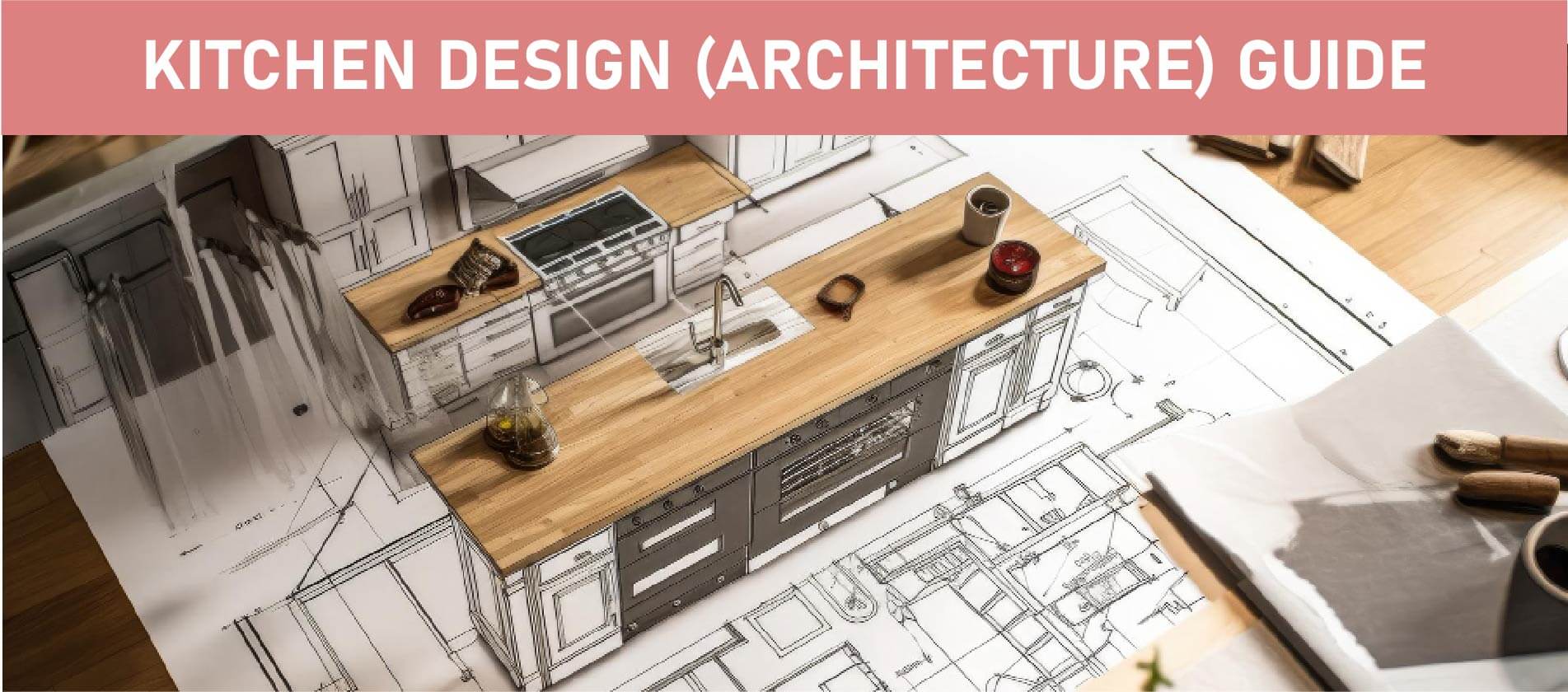
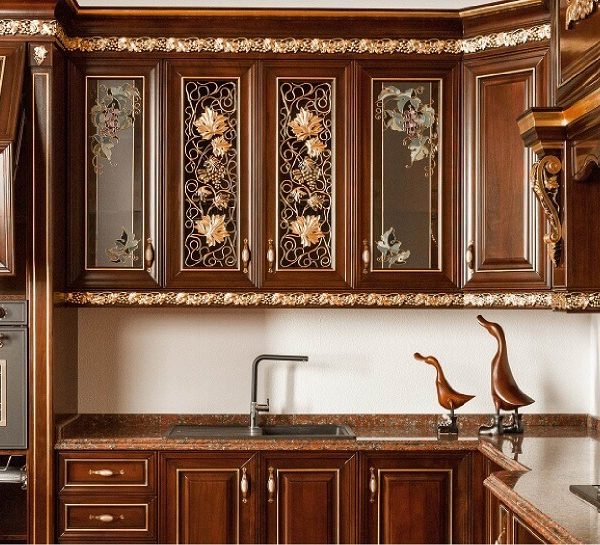
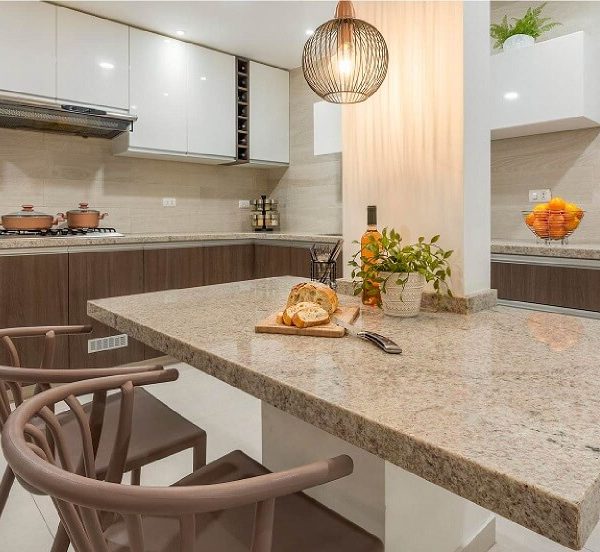
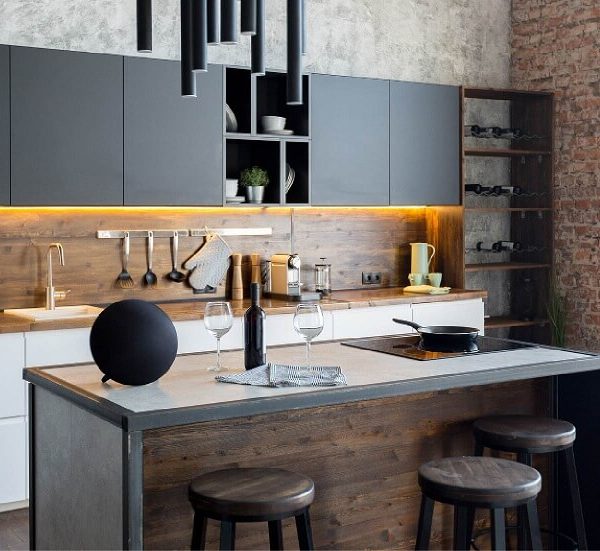
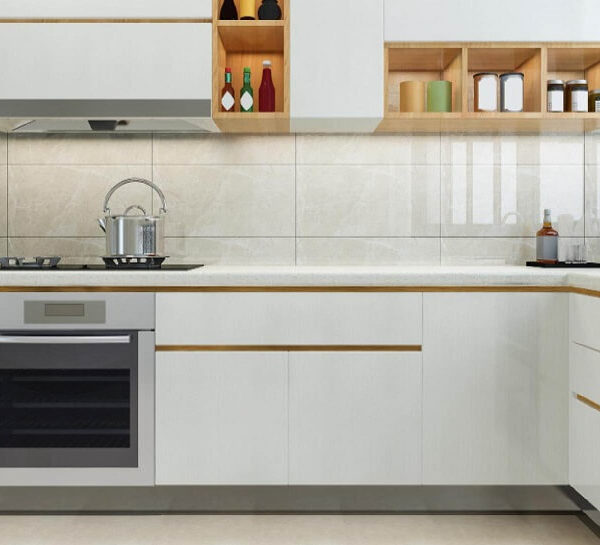
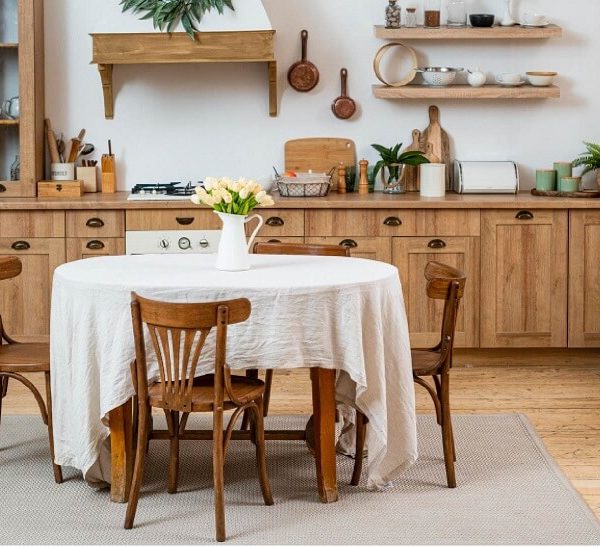
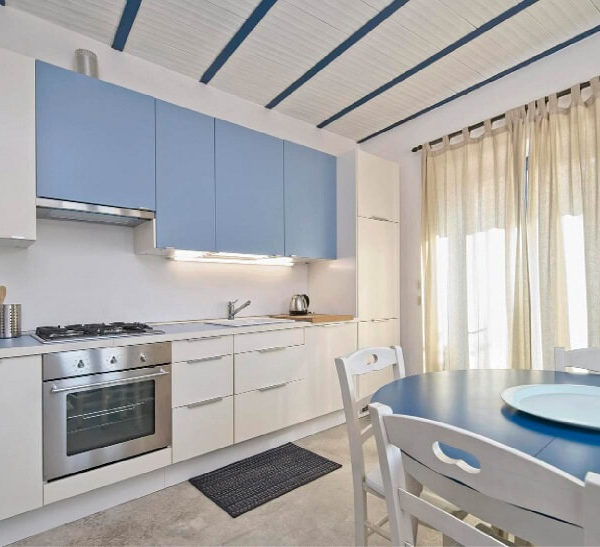
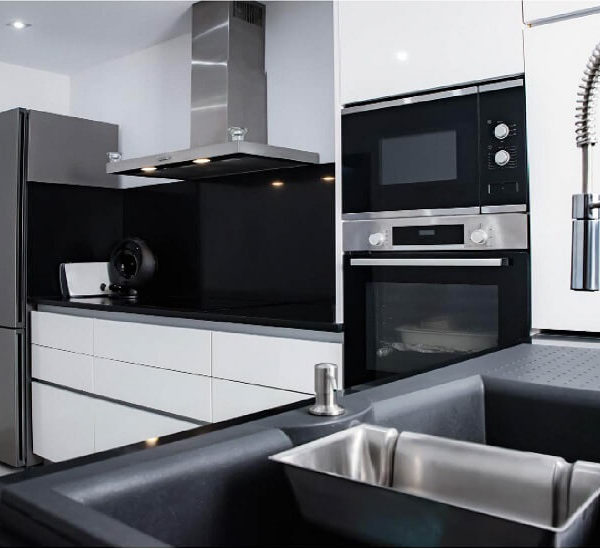
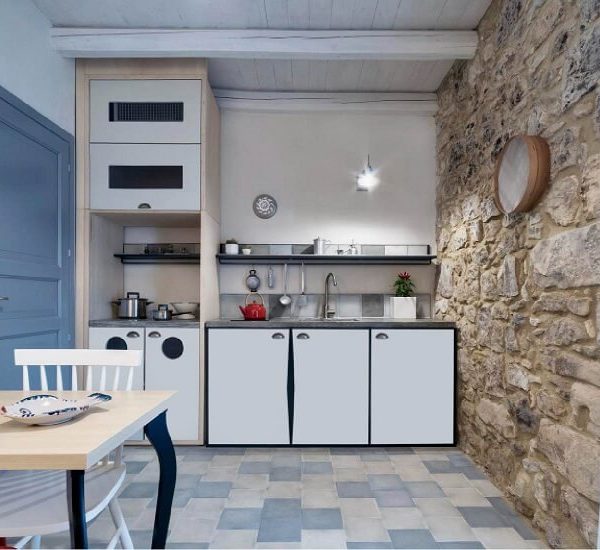
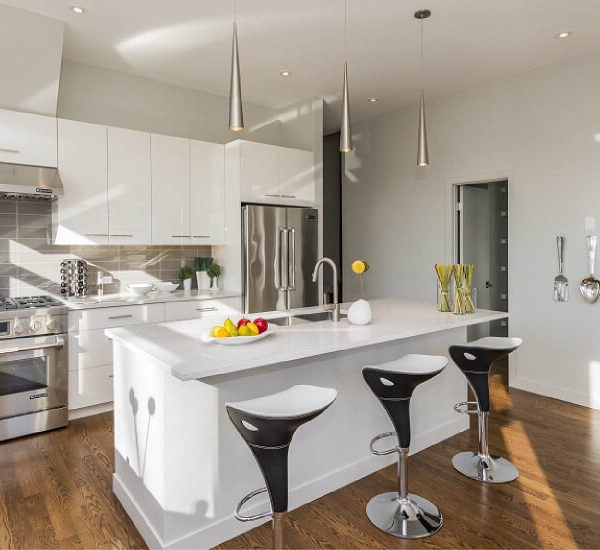
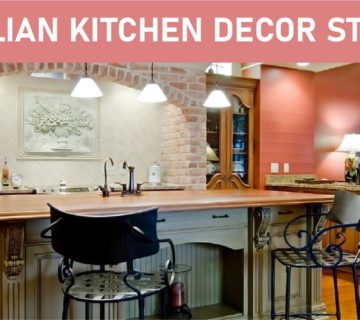
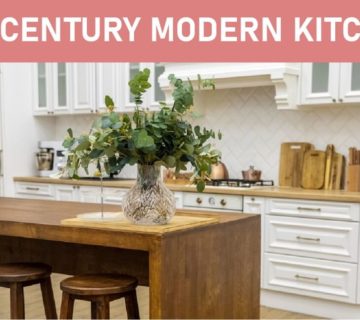
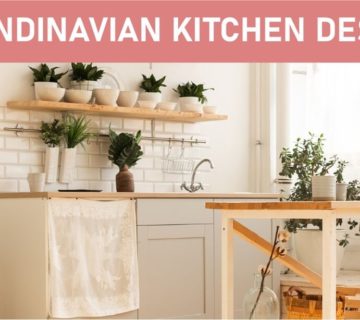
No comment